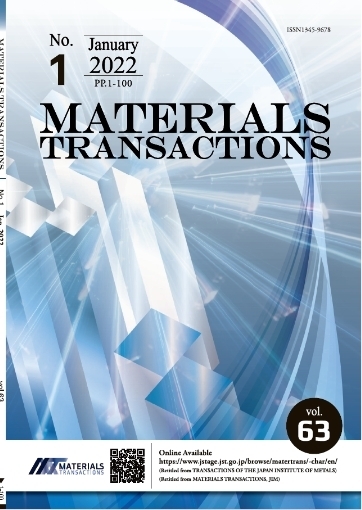Structure and Magnetic Properties of Co–Ni Spinel Ferrite Particles Synthesized via Co-Precipitation and Hydrothermal Treatment at Different Temperatures
Mikio Kishimoto, Hawa Latiff, Eiji Kita, Hideto Yanagihara
pp. 485-489
抄録
Co–Ni spinel ferrite particles were synthesized via chemical co-precipitation and subsequently performed hydrothermal treatment at different temperatures. Fine particles of size with a few nanometers and spherical or cubic particles of size approximately 30 nm, which are responsible for magnetic properties, were obtained. The crystallite size obtained using the Scherrer equation was 24–27 nm and showed no dependency on the hydrothermal treatment temperature unlike the apparent particle size observed using transmission electron microscopy. The coercive force showed a remarkable increase with the decrease in the hydrothermal treatment temperature from 141 kA/m at 240°C to 400 kA/m at 100–120°C, in contrast to the decrease in magnetization from 60.0 Am2/kg at 240°C to 37.2 Am2/kg at 100°C. The specific composition of the Co–Ni spinel ferrite particles is expected to affect the high coercive force and the remarkable dependency of the coercive force on the hydrothermal treatment temperature.










